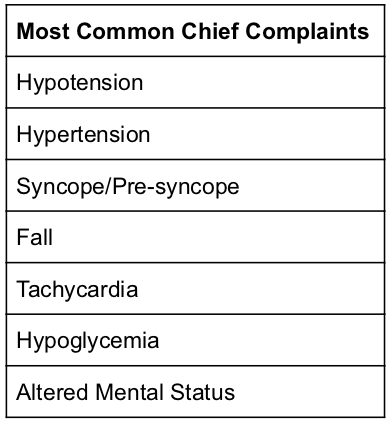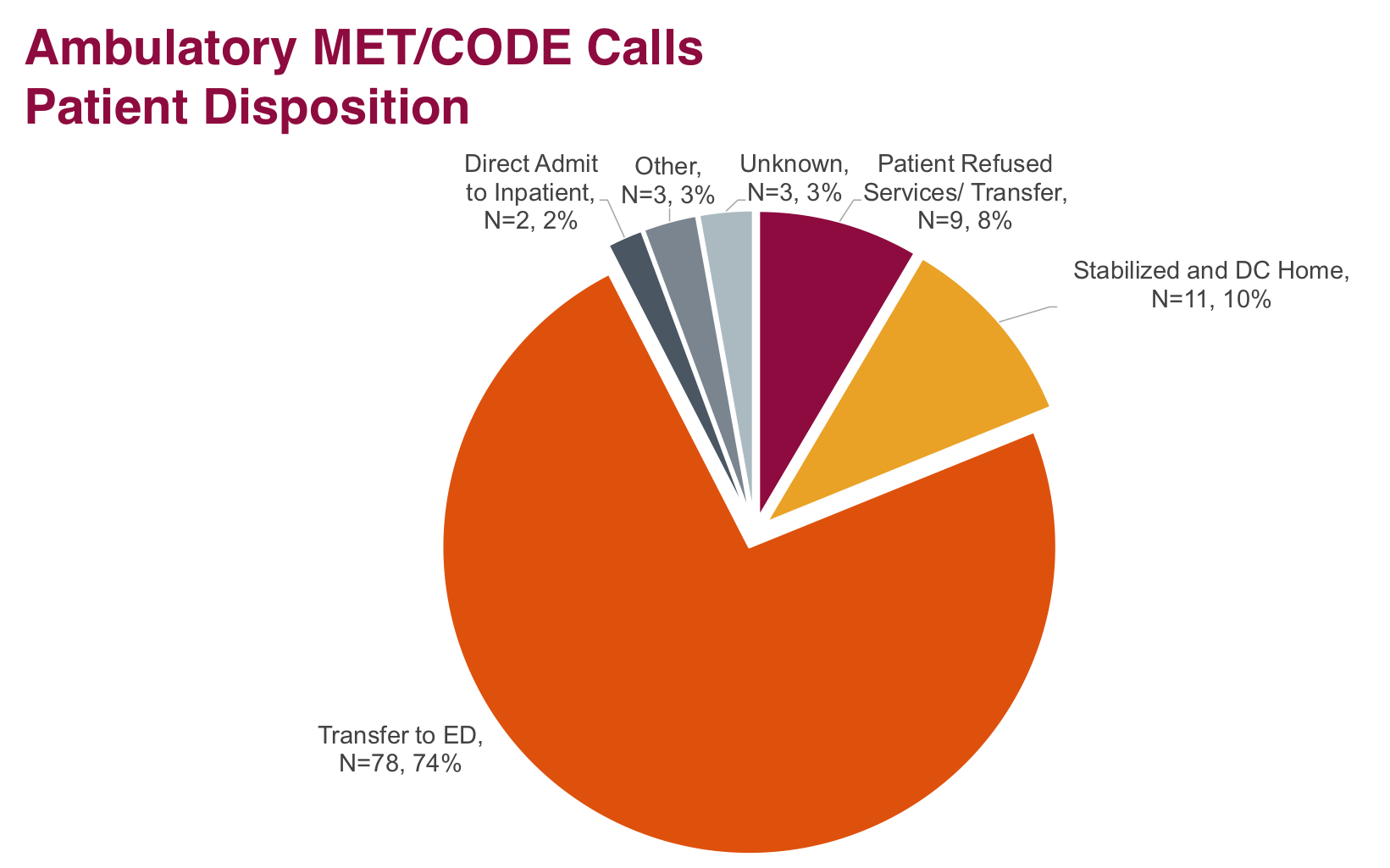Background: While rapid response teams are well established for inpatient emergencies, outpatient emergency response on large medical campuses is much more variable. At our institution, this need for outpatient emergency response is particularly acute. As a tertiary referral center, cancer treatment center, and the largest transplant center in the state, our clinics provide 1.4 million visits per year to a large amount of medically complex patients. These clinic buildings are connected with our inpatient units and emergency department (ED) via walkways. While the clinics previously called 911 for emergencies, this system was burdened by multiple major inefficiencies. Delays in patient care arose from the need to wait for an ambulance to arrive on campus, find parking and the appropriate clinic, and then transport the patient outside and around campus to the ED. Although the ambulance ride was short, the ambulance companies’ bills to patients were high, averaging about $1500. The high volume of calls from our clinics also placed significant stress on our city’s emergency response system, with 911 operators and ambulance crews managing around 300 calls per year from campus.
Purpose: The Ambulatory Medical Emergency Team (AMET) was created to replace 911 response to acutely ill patients in clinics and common areas on campus.
Description: The AMET was rapidly developed and implemented over a period of about a month in August 2019 by a multidisciplinary group that included hospital medicine, the emergency department, the resuscitation committee, security, hospital operators, nursing educators, and hospital and outpatient leadership. The team is composed of a hospital medicine provider (advanced practice provider, attending physician, or senior resident) and an ED nurse.The team is activated via a call to our campus operators. Once on site, the AMET provides rapid assessment, intervention, and transportation to the appropriate level of care, typically the ED. Averaging 2-3 activations per day, the team has responded to a wide variety of calls, with the most common chief complaints relating to new vital sign abnormalities or syncope/pre-syncope. The AMET nurse carries a jump bag with a number of rapidly acting interventions such as IV fluids, epinephrine for anaphylaxis, oral glucose, and naloxone. While most patients are transported to the ED, in some cases we are able to consult with the outpatient provider and avoid a potentially unnecessary ED visit.The team has provided a significant reduction in response time over 911, with a review of surveillance footage finding an average time from 911 response to ED evaluation of 28 minutes, compared with 10 minutes for the AMET. In a particularly notable case, the AMET was called for a patient bleeding due to placenta previa who was found in a public bathroom. The patient was rushed to the obstetric emergency department and underwent c-section within 25 minutes of the initial call.
Conclusions: The AMET has achieved a significant reduction in 911 calls from campus, saving patients money and decreasing stress on community resources. The team exemplifies a novel way for hospitalists to improve patient care and reduce healthcare costs.


